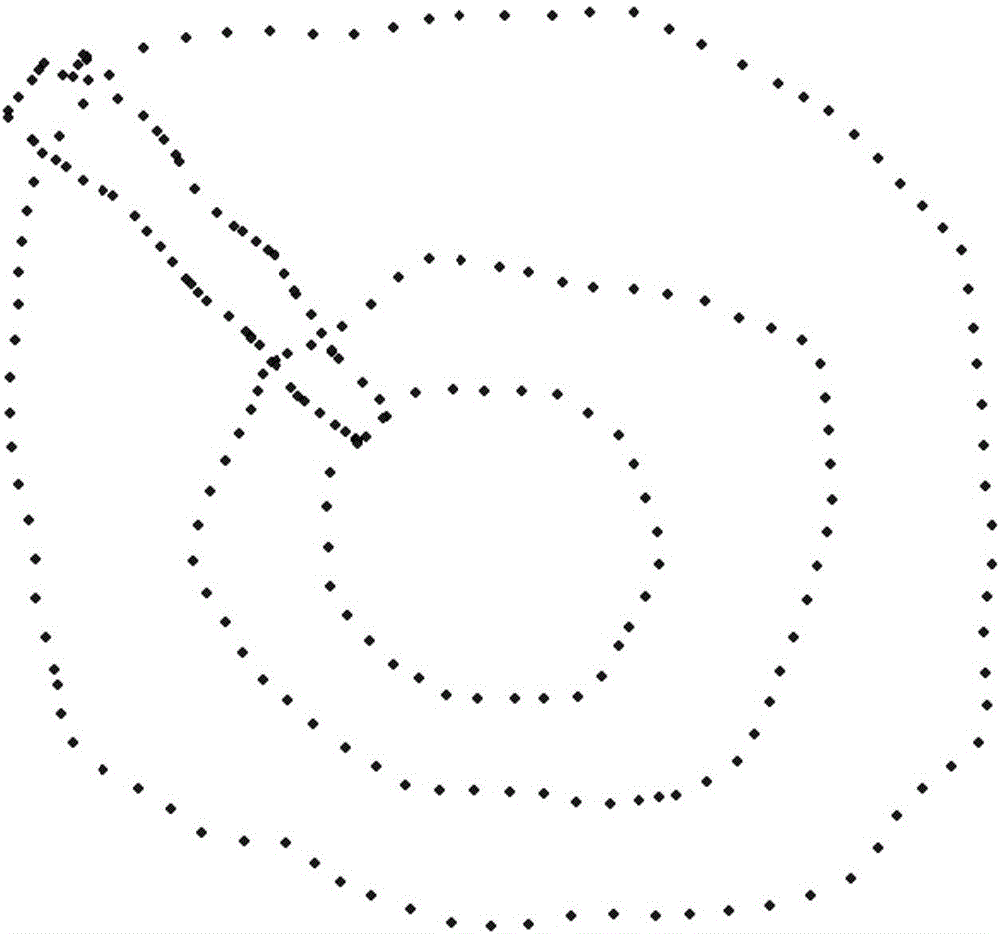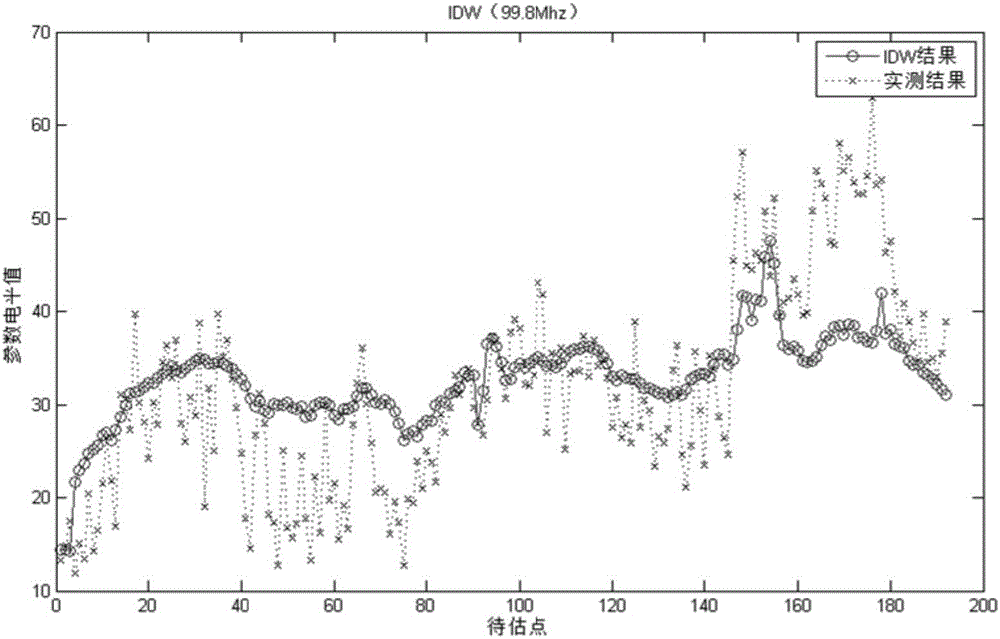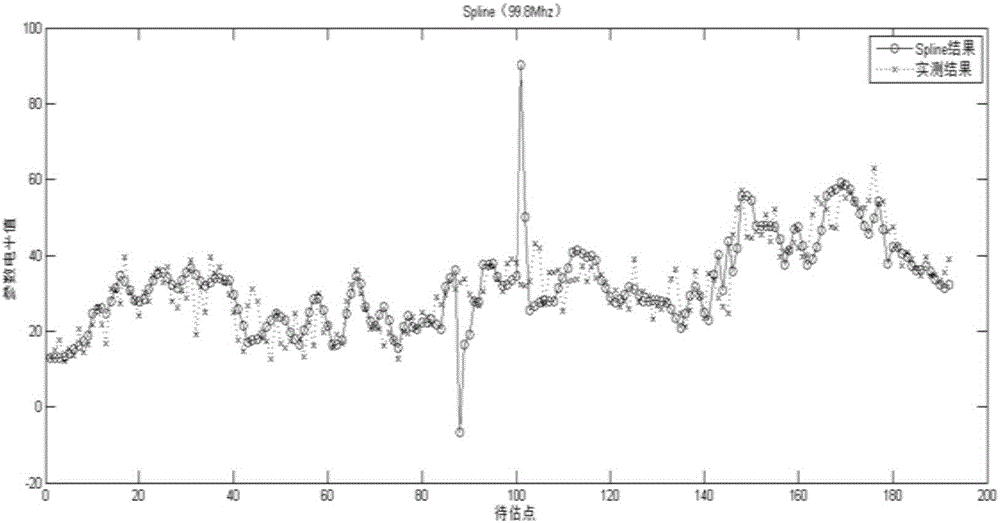Radio environment map field intensity parameter estimation algorithm
A parameter estimation algorithm, radio technology, applied in antenna radiation patterns, electromagnetic field characteristics, complex mathematical operations, etc., can solve the problems of not considering radio spatial distribution characteristics and propagation characteristics, prediction errors, and low accuracy of prediction results, etc., to achieve excellent prediction The effect of precision
- Summary
- Abstract
- Description
- Claims
- Application Information
AI Technical Summary
Problems solved by technology
Method used
Image
Examples
Embodiment 1
[0107] Field Strength Estimation Algorithm for Electromagnetic Environment Map Parameters
[0108] step 1:
[0109] (1) Calculate the distance between observation points, Get the distance matrix D between two observation points;
[0110] (2) lag=min(D), lag_max=INT(max(D) / 2 / lag), h=1:lag:lag_max, LAGS=INT(D / lag);
[0111] (3) Calculate the experimental variation function value R(i),
[0112] fori=1:lag_max
[0113] h(i)=i*lag;
[0114] SEL=(LAGS==i);
[0115] N(i)=sum(sum(SEL==1));
[0116] R(i)=sqrt(sum(G(SEL)) / (2*N(i)));
[0117] End for;
[0118] Step 2:
[0119] Through the theoretical variogram model given by formulas (9) and (12), the particle swarm optimization algorithm is used to fit the theoretical variogram model formulaγ itm and gamma itmf ,
[0120] (1) Initialization: Randomly generate the position and velocity of particles in the d-dimension of the problem space;
[0121] (2) Evaluate particles: For each particle, use the formula (15) to get the fi...
PUM
 Login to View More
Login to View More Abstract
Description
Claims
Application Information
 Login to View More
Login to View More - R&D
- Intellectual Property
- Life Sciences
- Materials
- Tech Scout
- Unparalleled Data Quality
- Higher Quality Content
- 60% Fewer Hallucinations
Browse by: Latest US Patents, China's latest patents, Technical Efficacy Thesaurus, Application Domain, Technology Topic, Popular Technical Reports.
© 2025 PatSnap. All rights reserved.Legal|Privacy policy|Modern Slavery Act Transparency Statement|Sitemap|About US| Contact US: help@patsnap.com



